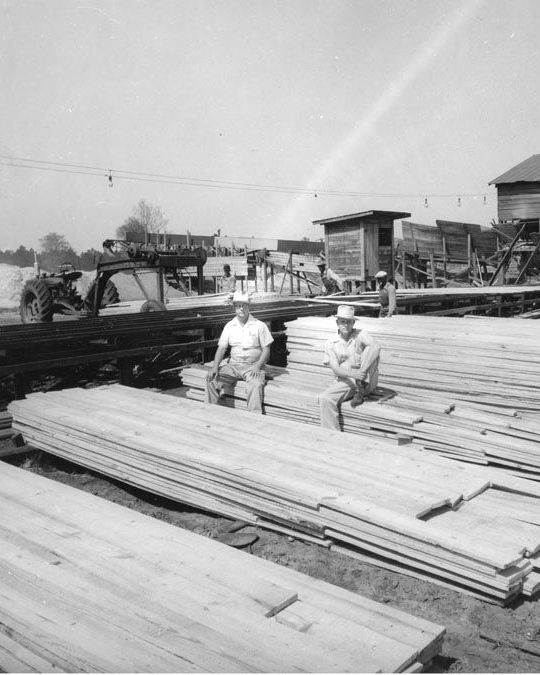
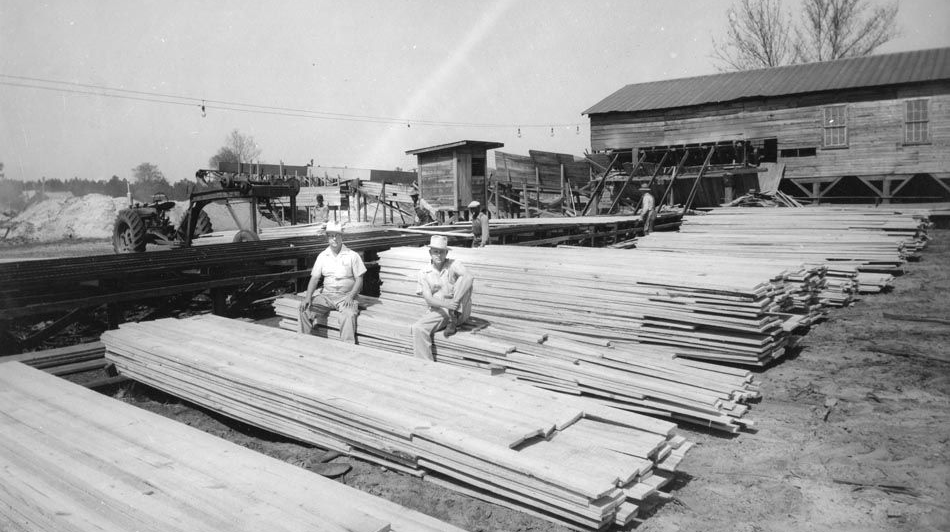
Our history.
Canfor’s story began in the 1930s with a single, family-owned operation on the banks of the Fraser River in British Columbia, Canada. Our 85+ year history has shaped us, but our vision for the future defines us.
A partner for generations.
While many things have changed since Canfor was founded, our commitment to always be better—for our people, our customers, and the forests and communities we call home—remains the same. Driven by our values, we have grown to be a global leader in the manufacturing of low-carbon forest products. Along the way, we have added great companies, assets and leaders, each with their own unique histories and always aligned with our values.
Humble Roots and Unwavering Quality
1930s and 40s
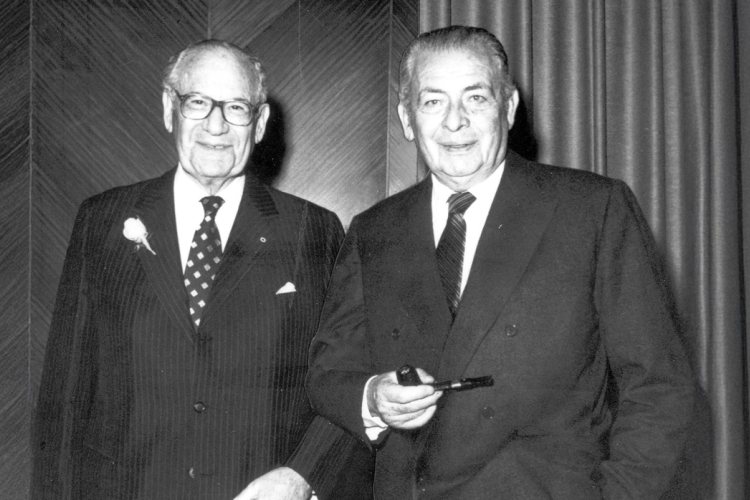
1938: Pacific Veneer founded.
A foundation of innovation and strength is built on the banks of the Fraser River in 1938 when John Prentice and Poldi Bentley establish Pacific Veneer—a small mill, with 28 employees. By 1939, the mill grows to employ 1,000 men and women supplying Douglas Fir plywood and increasingly innovative materials for aviation and marine applications.
Early 1940s: Expansion and leadership.
The 1940s—a defining era filled with growth—sees John and Poldi acquire several assets that would secure their position as leaders in manufacturing forest products on the west coast. Eburne Saw Mills Limited is purchased in 1940 and upgraded to cut hemlock and balsam and in 1943, a group of small logging operations in the Fraser Valley, referred to as the Harrison operations, are acquired.
Mid 1940s: Securing resources and red cedar leadership.
In 1944, the purchase of timber rights in the Nimpkish Valley on Vancouver Island, becoming the Englewood Logging Division, ensures a stable log supply. By 1948, Canfor solidifies its position as the largest producer of red cedar shingles and shakes with the acquisition of Huntting-Merritt.
1947
Canfor is Born
Nimpkish is perhaps the most defining acquisition in the decade as it included a small firm called Canadian Forest Products Limited—a name that struck a chord in John and Poldi, and thus, Canfor was born.
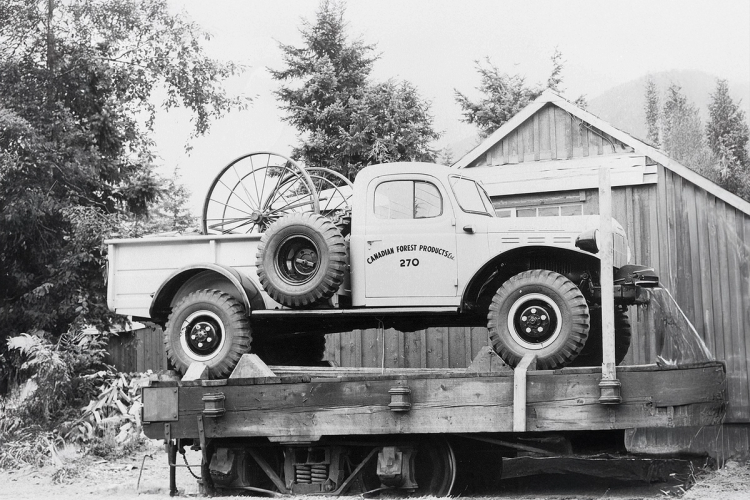
Decades Defined by Growth and Visionary Leadership
1950s and 60s
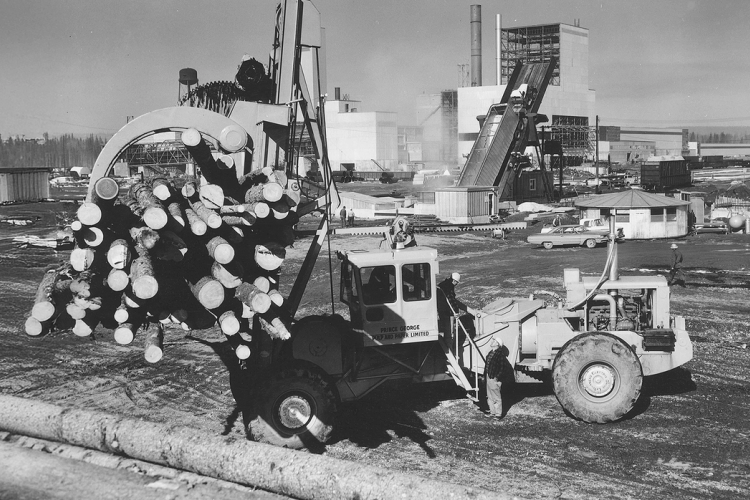
1950s: Canfor ventures into pulp and beyond BC.
Canfor grows beyond its west coast origins and the BC border—growth that is driven by decisive leadership and a vision for the future. In 1951, Canfor's expansion gains momentum as it moves into the pulp business with the acquisition of a small unbleached Kraft pulp mill from Howe Sound Pulp Company Limited at Port Mellon. In 1955, Canfor purchases Northern Plywood Ltd., expanding the company’s footprint into Grande Prairie, Alberta.
1960s: Pulp innovation and northern expansion.
In the 1960s, Canfor's growth accelerates with a joint venture in 1962 leading to the start-up of Prince George Pulp and Paper in 1965. Meanwhile, in 1963, Canfor expands its operations into northern BC, acquiring sawmills, planer mills and timber rights in the Peace River District and consolidating the holdings into the Chetwynd Division. Further innovation follows with another joint venture, resulting in the creation of Intercontinental Pulp Company Ltd. in Prince George, BC, which starts operations in 1968.
1970s and 80s
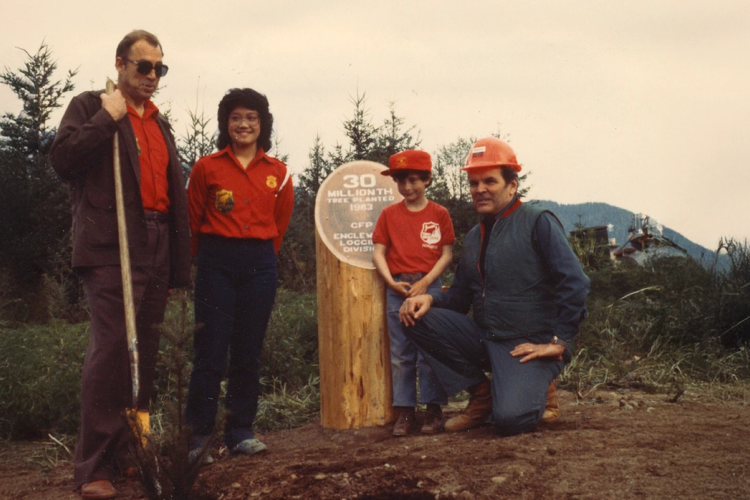
1970s: Strategic growth and new leadership.
New leadership sets the stage for decades of successive growth that sees the company evolve into one of the world’s foremost producers of quality forestry products.
In the early 1970s, Canfor commences production at its first, and purpose built, mill in Hines Creek, Alberta. Poldi’s son Peter Bentley, who matured in the business through a variety of positions, becomes President in 1975.
1980s: Public debut and expansion milestones.
Nearly 45 years since the company’s inception, Canfor Corporation becomes a public company in 1983.
Canfor sees a strong decade with the strategic acquisitions of the Swanson Lumber Co. Ltd. locations in High Level, Alberta, and Fort St. John, BC, in 1981, along with the Balfour Forest Products Inc. Clear Lake, Netherlands, Taylor and Polar divisions in 1989.
1990s and 2000s
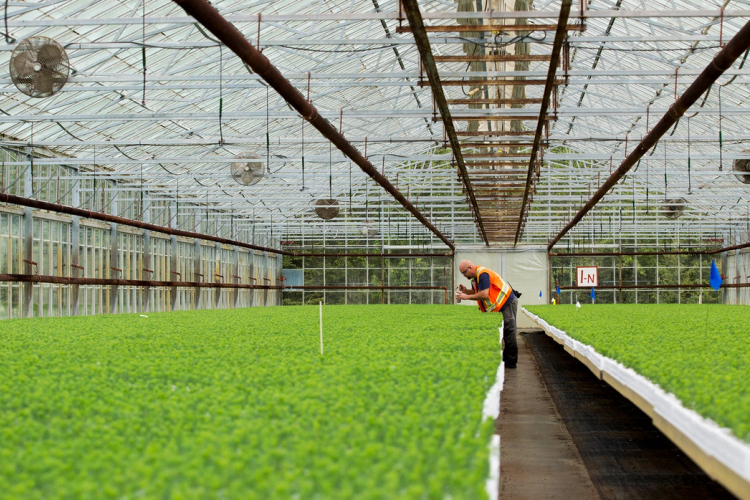
1990s: Northwood acquisition elevates Canfor.
In 1999, Canfor becomes Canada's largest producer of softwood lumber and kraft market pulp following the acquisition of Northwood Inc., which includes: Northwood Pulp Mill, Prince George Sawmill, North Central Plywoods, Rustad, Houston, Upper Fraser operations, Kyahwood Forest Products joint venture and the JD Little Forest Centre.
2000s: Expanding markets, production and community partnerships.
The millennium ushers in an era of tremendous growth and community commitment that sees Canfor expand into new markets in Canada and the US.
With the acquisition of Slocan Forest Products Ltd. in 2004, the company’s production increases to over 5 billion board feet per year.
In 2006, Canfor’s commitment to collaboration with Indigenous communities is highlighted by an industry precedent-setting partnership with the Moricetown Band in 2006 with the development of a wood pellet production facility in Houston, BC.
In the same year, Canfor expands into the US with the acquisition of New South Companies Inc. in South Carolina, adding 140 million board feet of Southern Yellow Pine to its production capacity.
2010
75 Years: Growth and Innovation
Canfor celebrates its 75th year in business and its position as one of largest forest products companies in the world, with leadership focused on growth and innovation.
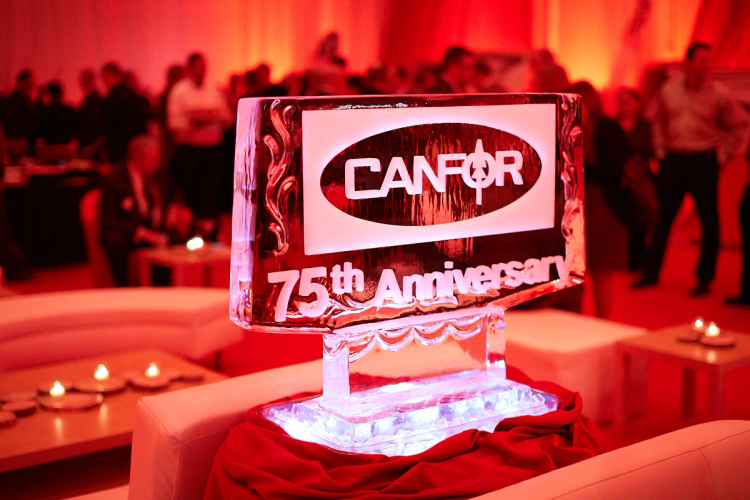
Growing Global Demand
2010s
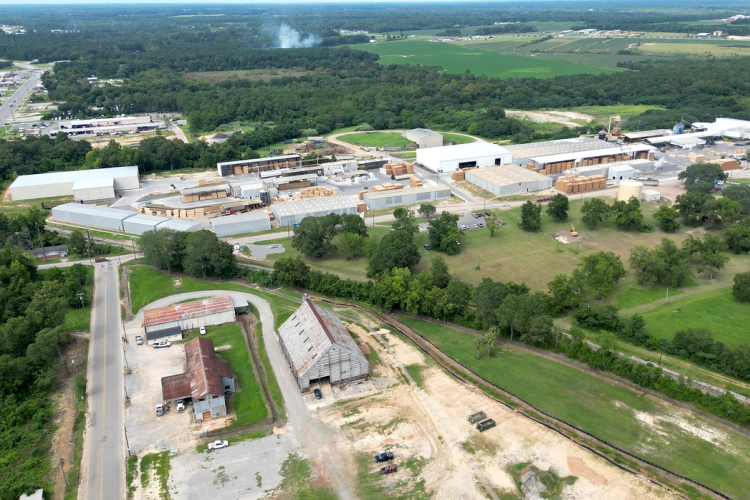
Early 2010s: New leadership and strategic US expansion.
Don B. Kayne, who has dedicated his entire career at Canfor, is appointed as the company’s fourth President and CEO in 2011.
In 2013, Canfor acquires Scotch Gulf Lumber, enhancing its operations with state-of-the-art equipment to produce high-quality Southern Yellow Pine lumber for growing global demand. This growth continues in 2014 with an acquisition from Southern Lumber in Hermanville, Mississippi. In 2015, Canfor completes a phased purchase agreement for Beadles and Balfour Lumber Companies, followed by the acquisition of Anthony Forest Products Company in El Dorado, Arkansas, in October.
Late 2010s: Expanding global reach and premium offerings.
In 2016, Canfor strengthens its portfolio with the acquisition of Wynndel Box and Lumber Ltd. in Wynndel, BC, adding a specialized facility and premium products to its offerings. The company further expands its global presence in 2019, becoming the majority shareholder of Vida Group in Sweden and completing the first-phase purchase of 49% of Elliott Sawmilling Co. Inc. in South Carolina.
Sustainability and Modernization
2020s
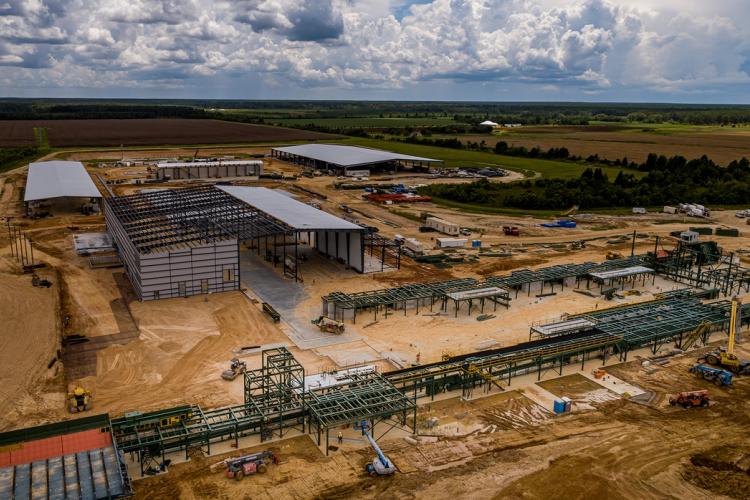
2020-2021: Driving sustainability and global growth.
In 2020, Canfor strengthens its operations by completing the full acquisition of Elliott Sawmilling Company Inc. and, through its 70%-owned subsidiary Vida Group, acquiring three Swedish sawmills from Bergs Timber.
In 2021, Canfor announces its investment in Arbios, a low-carbon biofuel plant in Prince George, BC, and commits to build a state-of-the-art sawmill near DeRidder, Louisiana, which opens in 2023.
2022-2024: Advancing sustainability and modernization.
In 2022, Canfor marked a new era of innovation and sustainability with its ambitious commitment to achieve net-zero emissions by 2050.
In the same year, Canfor acquires Millar Western Forest Products Ltd.'s solid wood operations in Alberta, adding Whitecourt, Fox Creek, and Spruceland to its western Canada portfolio. Additionally, the company announced a major investment to upgrade and expand its Urbana sawmill in Union County, Arkansas.
In 2024, Canfor strengthens its operations with the acquisition of the Resolute El Dorado Sawmill in Union County, Arkansas, now renamed Canfor Iron Mountain Sawmill. Meanwhile, in Axis, Alabama, Canfor completes construction of a state-of-the-art sawmill, further advancing its strategic growth in the region.
2025
Our Leadership Today
Don Kayne retires after 46 years at Canfor, including 14 as CEO. Effective January 1, 2025, Susan Yurkovich succeeds him as CEO and Stephen Mackie becomes CEO of Canfor Pulp and COO of North American operations.
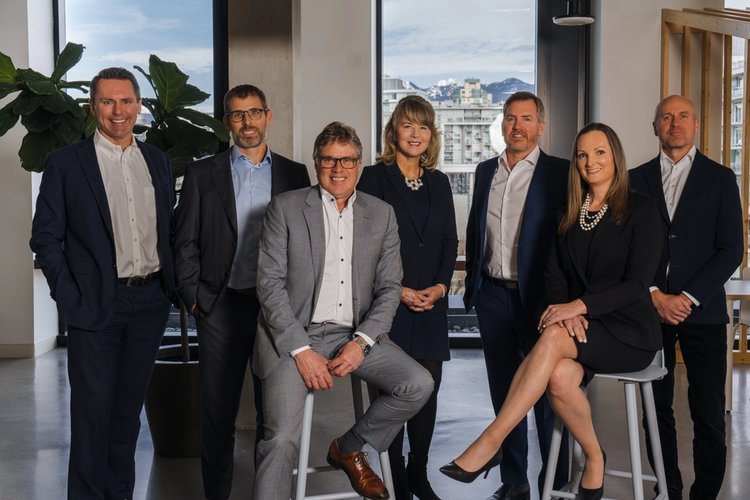
Shaping our future.
As we look to the future, Canfor remains dedicated to innovation and progress, continually reimagining our production processes and enhancing efficiency. By embracing new technologies and optimizing the use of our natural resources, we are shaping solutions that meet the demands of a lower-carbon world.
